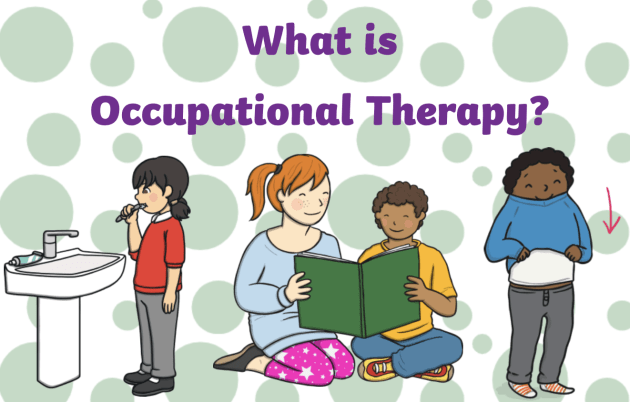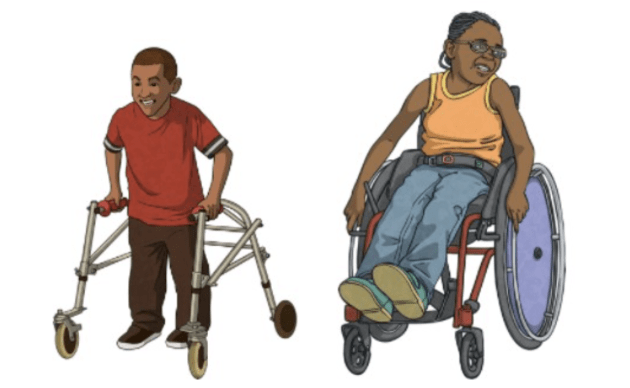



Occupational therapy, or OT for short , is a diverse field of therapy that can support people in different ways. In particular, it is used to help people improve their ability to carry out important daily tasks for health, social and economic motivations, as well as things relating to interests, hobbies and passions too.
If you're wondering, what is an occupational therapist? Well, An occupational therapist is a practitioner who specifically supports people who need help to carry out their daily tasks. This role of an OT directly makes a difference to the lives of others; they work to find solutions to problems by thinking quickly on their feet. Once qualified, occupational therapists may decide to specialise in paediatrics or elderly care for example, and can progress onto other senior and specialist roles.
Find out below who occupational therapists help in their day-to-day role.
OT's can help different types of people including adults and children. Different people will have occupational therapy sessions for different reasons. Some common examples of people who might benefit from occupational therapy include:
In all of these scenarios, occupational therapy can help people by increasing their independence and confidence with different tasks and activities. Whether it is used as a treatment for a temporary or a permanent limitation, occupational therapy can lead to more happiness and satisfaction in life.
Let’s take a closer look at how occupational therapy can help…
An occupational therapist will start by assessing a person's individual needs in order to determine a treatment and therapy plan that will help them. When offering support to children with any type of physical disability, SEND, or learning differences, a one-size-fits-all approach is never the best course of action. This is just as true when it comes to the variety of different ways that occupational therapy can help and benefit people.
Some examples of the skills that OT can help children to develop include:






There are a few key methods that occupational therapists use to help patients develop these skills. Often, a combination of these methods may be the best way forward for a patient. These include:
Aids and adaptations can come in a variety of different forms as part of occupational therapy. Special equipment like wheelchairs and aids for mobility, eating, or dressing, for example, are popular choices for people with a range of physical disabilities.
There are also a number of different ways that we can adapt people’s homes, schools and workplaces to accommodate specific needs and make life easier. For example, we can add hand-rails in helpful places, or adapt doors to rooms or cupboards to make them easier to open.
An occupational therapist can also tailor a task to better suit a child’s needs and abilities. Equipment and tools used can also be modified. For example, a child struggling with fine motor skills or symptoms of dysgraphia may benefit from some modifications.
In addition to exercises designed to promote fine motor skill development, a child may benefit from physical support such as finger or wrist splints, or an alternative to handwriting such as a laptop or tablet which allows children to type instead of writing with pens and pencils. Computers and tablets also allow for speech to text software which provides a complete alternative to writing altogether.
All of these things can provide greater access to education, and allow greater participation for children who are having occupational therapy. Support like this can help children to become more independent, and increase their confidence with tasks relating to their area of need. This is a great example of how occupational therapy can help in life changing ways!
Often the same reason that a person may seek occupational therapy can cause some stress and difficult emotions. That’s why, in addition to offering support as described above, it’s also important to teach children that these emotions are okay to feel, but also give them frameworks and approaches that they can use to cope in difficult moments.
Our emotional regulation resources can be helpful for this, such as the Areas of Self-Regulation teaching framework. Try the Areas of Self- Regulation Teaching Pack for example!
Quite a lot, actually! There is some overlap between physiotherapy and occupational therapy - but the difference is in the primary focus.

Physiotherapy is designed to help people with their gross motor skills. These are skills that require full-body movement and involve the larger muscles in the body - tasks such as sitting upright, standing, walking, and running.
The focus is mostly on improving a person's physical capacity to perform tasks that may be inhibited by physical blockers that a person is experiencing. This usually comes through the form of physical exercises designed to help improve mobility (both through building strength and flexibility), align bone and joint problems, and lessen the pain a person may experience when moving.

Occupational therapy, on the other hand, is often more focused on the development of fine motor skills and the associated life skills, although it can also include gross motor skills and other areas too. As fine motor skills largely focus on muscles in the hands, they are essential to a lot of tasks for independent living.
Like a physiotherapist, an OT may use exercises and activities to help a person improve their physical capacity to perform these tasks, but they'll also engage other tools in their arsenal, such as finding alternative ways of doing things, or helping patients find aids or assistive devices that make a task easier to do.
To summarise, a physio is there to improve a person's physical ability to perform tasks involving their gross motor skills in order to give them the greatest amount of mobility possible and increase independence in this way. Occupational therapy can help people find ways to refine fine motor skills, in a variety of different ways, so that they're better able to exercise their independence. Both approaches are extremely useful, and they can be used in close conjunction!
If you're looking for occupational therapy in the UK, your first point of call should be your GP. Depending on your situation, you may be able to get access to OT (for you or someone in your care) free via the NHS or social services in your area, so talk to your GP about getting a referral. However, the waiting lists can be quite long, so there's also the option of finding an occupational therapist privately. One potential barrier to this is that private healthcare can be expensive!
Make sure to check the qualifications of your occupational therapist before starting treatment to ensure that they are a reputable source. If you’re looking in Britain, The Royal College of Occupational Therapists (RCOT) is a safe bet. You could also check the Health & Care Professions Council (HCPC) to review institutions in the UK, or a similar registry in other countries.
If you're looking for OT for your child, some schools, especially those that provide special education for children and young people with disabilities, may have occupational therapists within the staff team already. If this is the case, schedule an appointment with them to discuss your child's needs. Even if it's something kind of small, like struggles with penmanship, it certainly won't hurt to bring it up, and no-one'll think you're over-reacting.
Ultimately, it's about making sure your child gets the support they need to get the most out of their education and their later life - and OT can have a hugely positive influence on that!
Clinical reasoning occupational therapy refers to the thinking process occupational therapists will use when guiding patients through the process. This is so that they can make decisions that suit people’s needs with refined thinking skills.
There are eight different elements of clinical reasoning, each used to take different things into consideration when making decisions for the patient. These elements include:
Scientific - Take medical notes, statistics, and facts into consideration.
Diagnostic - Often related to scientific reasoning, but only taking into account the patient’s diagnosis.
Procedural - Focusses on what occupational therapy procedures will take place, when, and how.
Narrative - Uses personal storytelling in order to spot problems that may occur and how to overcome them.
Interactive - Similar to the above, but relating solely to the patient as an individual.
Pragmatic - Looks at the problems that could arise with occupational therapy, including cost and location.
Ethical - Refers to moral issues and the different between right and wrong.
Conditional - Takes a more empathetic approach in order to reach a solution.
Clinical reasoning occupational therapy is used by occupational therapists to answer two incredibly important questions — what did they do, and why did they do it?
Whether you’re an OT looking for helpful resources to use in a session, or a parent looking to continue support at home, our occupational therapy activities and guidance documents are a great place to start. Here are some recommendations, but be sure to browse the whole range, too!
Get Active! Sensory Circuits PowerPoint
Incorporate some fun sensory circuits into therapy sessions to put different skills into practise.
Seasonal Clothes Dress up Activity
Teach children how to get dressed and how to make decisions based on the weather or the time of year.
Practise setting the table with these place mats that clearly mark out where each piece of cutlery should go around the plate.
Tying My Shoelaces: Building Finger Strength
These exercises are great for occupational therapists who are trying to improve a child’s ability to tie their shoelaces. They feature super cute animal finger race templates that kids are bound to love!
Webinar: Everything You Need to Be Genuinely Inclusive
This is a great example of one of our fantastic adult guidance resources that are designed to help parents, teachers and carers to be as inclusive as possible.
And, if that wasn't enough, we also have a wide range of videos on YouTube that you can use to support occupational therapy and session planning too. Here's one about our Visual Aids, for example: